Discover and visit the most best locations
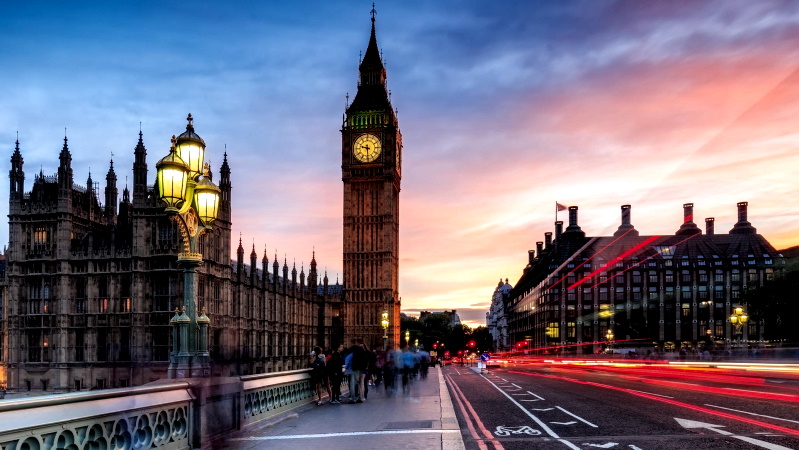
,,☝☝👀 11 Very Best Cities To Visit In England👀''
1. London: The UK's All-in-One Destination
Consisting of England, Scotland, Wales, and Northern Ireland, the United Kingdom (UK) have long been one of Europe's most popular tourist destinations. The country's appeal has much to do with its diverse scenery and rich cultural heritage. The best places to visit in the UK include everything from beautifully preserved country estates and castles, to its many world-class art galleries and museums. One of the greatest pleasures of a UK vacation, however, is just how easy it is to explore this fascinating and diverse country. Thanks to its size - the UK could easily fit into the state of Texas (with room to spare) - you can base yourself in cities such as London or Liverpool and simply take a train, bus, or ferry to explore other areas. From the nation's capital, a 90-minute train ride is all it takes to access beautiful Salisbury, and a short bus ride or tour from here will take you to one of the country's most recognizable attractions, Stonehenge. And if you want to hop between the Scottish cities of Edinburgh and Glasgow, a one-hour train ride will deposit you in the heart of either city. Plan your sightseeing adventures with our list of the best places to visit in the UK.
While it's possible to plan a trip to the UK without visiting London, it's certainly not to be advised. The nation's sprawling capital boasts plenty of attractions to keep you busy. For those interested in learning more about the UK's rich history, one of the top things to do in London is visit the Tower of London. Located beside the spectacular Tower Bridge on the banks of the River Thames, this former palace and prison include highlights such as the iconic 1,000-year-old White Tower, with its fascinating displays of armor and weaponry, and the Jewel House, home to the Crown Jewels. Fans of Britain's Royal Family will want to head to Buckingham Palace, London's Royal home since Queen Victoria's reign. Here, you can enjoy the colorful pomp of the Changing of the Guard or even take a tour of the Palace's State Rooms (be sure to book in advance as they're only open for a few weeks each year). The city's Whitehall Road area is another must, where you'll find Big Ben and the Parliament Buildings, as well as Westminster Abbey, the scene of many a royal wedding. Another area to visit in London is South Kensington, home to the city's best museums, including the Victoria and Albert Museum and the Natural History Museum, as well as the famous Harrods department store. Also check out Trafalgar Square, home to iconicNelson's Column and the National Portrait Gallery.
2. Edinburgh: Scotland's Capital
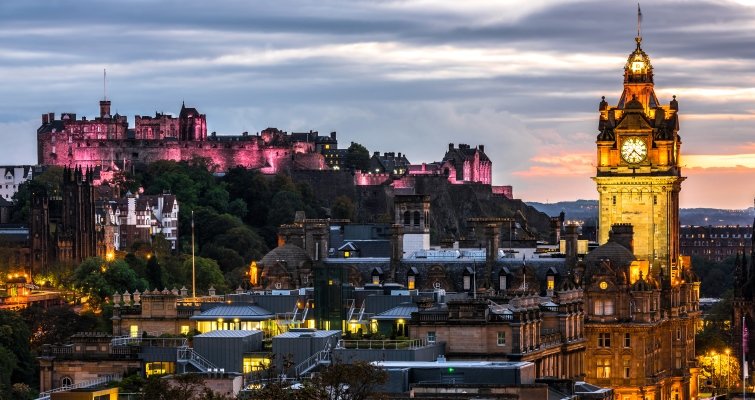
One of Scotland's most attractive cities, the capital city of Edinburgh is also one of the UK's most visited destinations. Popular for its many well-preserved historic buildings, Edinburgh is perhaps best known as the home of the majestic Edinburgh Castle. Perched high above the old city on a rocky promontory, this 13th-century royal fortress includes highlights such as the famous One O'Clock Salute, held daily at Half Moon Battery, as well as the Scottish Crown Jewels in the Royal Palace. Also worth seeing are the Scottish National War Memorial and the famous Stone of Destiny (the Stone of Scone), which only returned to Scotland after being held for 700 years in London. From the castle, it's easy to explore the other most important historic sites in the city, most notably the Old Town's Royal Mile with its fine architecture, boutique shops, cafés, restaurants, and art galleries. It's also where you'll find the splendid old Palace of Holyroodhouse. Other Edinburgh highlights include broad Princes Street, popular for its shopping and dining, as well as for the Royal Botanical Garden and the National Gallery of Scotland.
3. Roman-era Bath
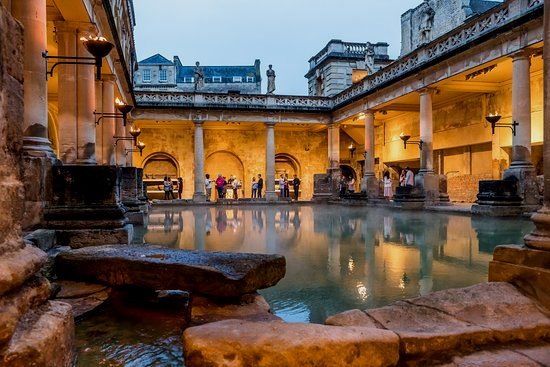
Although one of the UK's smaller cities, Bath more than makes up for its diminutive size with a multitude of things to see and do. Named after its famous Roman Baths, this beautiful city has been luring visitors to its healing waters for more than 2,000 years. Gushing from three hot springs, the water-known to consist of 43 different minerals, hence its curative properties-travels upwards some 3,048 meters at a rate of 275,000 gallons per day, before spilling out at a consistent 46.5 degrees Celsius. While it's not possible to bathe in the original Roman Baths, several nearby spas - most notably the superb Thermae Bath Spa - offer guests the chance to enjoy the city's famous waters. In addition to its ancient history, Bath is also famous for its lovely Georgian architecture. The best examples can be seen along the magnificent, curved Royal Crescent, with its palatial townhomes. One of them, No.1 Royal Crescent, is now a museum that offers a fascinating peek into life during Georgian times.
4. Ancient Stonehenge and Medieval Salisbury
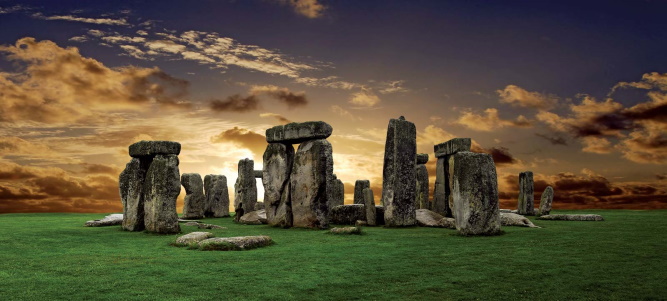
One of the planet's oldest World Heritage Sites, Stonehenge has been a place of pilgrimage for more than 4,500 years. It was believed to have been erected as a place of worship, but these days, the crowds consist of tourists drawn by the sheer scale of this magnificent monument to mankind's ingenuity. It's a sprawling site, covering an area of more than 20 square kilometers and boasting a state-of-the-art visitor center. Here, you can catch a fascinating glimpse not only into the construction of Stonehenge but also its history since then. Plan and purchase a timed ticket for the day of your visit. Be sure to also spend time exploring the nearby medieval city of Salisbury, located just 16 kilometers south of Stonehenge. You'll be rewarded with a chance to visit one of the country's most famous cathedrals, dating back to 1220 and home to an original Magna Carta. Afterward, be sure to wander the old city center with its many fine churches and historic medieval architecture.
5. Wonderful Windsor

The historic town of Windsor, conveniently located a short train ride west of London, offers plenty of fun things to do for tourists. In addition to its lovely Thames-side setting and the many medieval half-timbered buildings along its quaint old cobblestone laneways, it's also home to spectacular Windsor Castle, the most famous of the UK's royal castles. This grand old castle has served as the summer residence of British royalty for more than a millennium. It was started by William the Conqueror in 1078 and is the world's largest inhabited castle. Highlights include the splendid State Apartments containing the Queen's Gallery and dining hall, each with magnificently painted ceilings and woodcarvings, and St. George's Chapel, famous as the home of the Knights and Ladies of the ancient Order of the Garter. When you've had your fill of these historic buildings, be sure to also spend time exploring the castle's large and beautiful grounds, almost 10 kilometers long. You'll enjoy some truly memorable panoramic views over Windsor and its castle. Other area attractions worth visiting include Legoland Windsor, a fun family resort set on 150 acres of parkland and just a short bus ride from the town center. Also worth seeing is Royal Ascot, the UK's most famous horse-racing venue (try to time your trip to coincide with the Royal Meeting held each June).
6. Idyllic England: The Cotswolds and Lake District

Covering almost 1,287 square kilometers of pristine countryside, the beautiful Cotswolds is undoubtedly one of the most photographed corners of the UK. Located an easy day trip west of London and close to the popular tourist attractions of Bath and Bristol, the Cotswolds includes some of the best parts of the counties of Oxfordshire, Gloucestershire, Somerset, Wiltshire, Warwickshire, and Worcestershire. Travelers flock here to experience a true taste of rural English life, and to explore its many quaint villages and idyllic pasturelands. One of the most popular ways to do this is via the area's extensive trail network, including the excellent 16-kilometer-long Cotswold Way. Other fun things to do include horseback riding and biking, or simply soaking up the history of popular market towns such as Castle Combe or Tetbury. To the north of the Cotswolds and covering an area of 1,448 square kilometers is another slice of beautiful English scenery: the Lake District National Park. Encompassing 12 of the country's largest lakes (Windermere and Ullswater are the biggest), this region is another region of the UK that's great to explore on foot thanks to its more than 3,218 kilometers of trails. Highlights include visiting Scafell Pike, at 978 meters the highest mountain in England, as well as exploring its many picturesque towns, including Grasmere.
7. Medieval York and its Minster
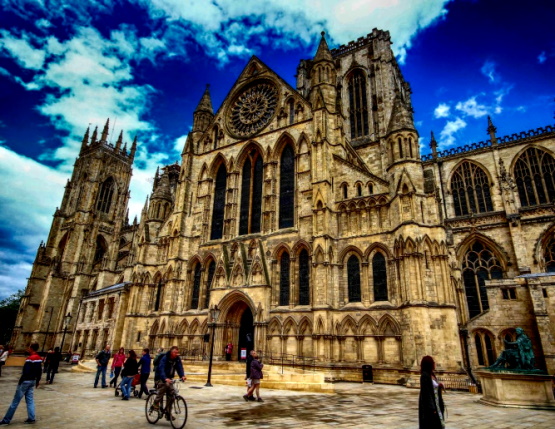
One of northern England's most popular tourist destinations, the medieval city of York, long the ecclesiastical capital of the Church of England, boasts one of the country's most magnificent cathedrals. The country's largest medieval church, York Minster can trace its roots back to the spread of Christianity in the 3rd century, although the splendid present Gothic structure was built almost 1,000 years later.
Highlights of a tour include the opportunity to view its 14th-century stained glass windows, plus the richly decorated interiors of the choir and north transept. Also worth a visit is a crypt, which contains parts of the original 11th-century church the cathedral now stands on.
Other landmarks worth exploring are the ancient City Walls, which stretch almost five kilometers around the old medieval city center. Along the way, you'll enjoy excellent views over The Shambles, a narrow 14th-century roadway, famous for its fine old timber-framed buildings, many of which hang over the street below. It's also an area known for its many restaurants and tearooms, as well as its many boutique shops and galleries.
York also boasts several major museums, the most popular being the National Railway Museum. Highlights of this museum's vast collection include many fine old steam engines dating as far back as 1820, plus a unique collection of Royal Trains.
8. The University Towns of Cambridge & Oxford
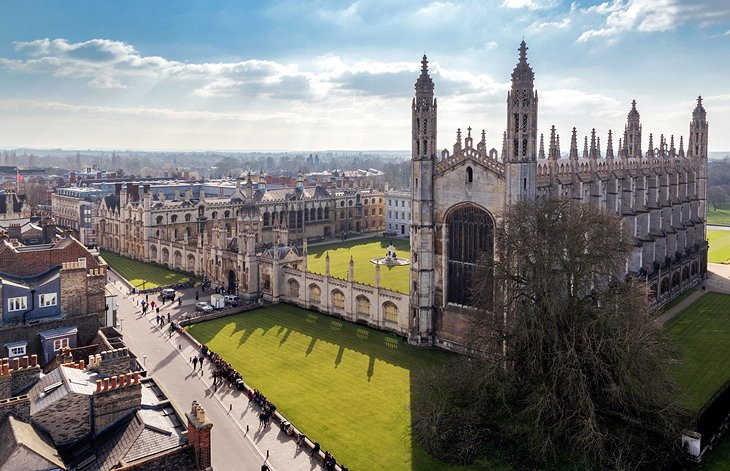
The UK has long been a center of learning, with two of its most famous university towns also ranking highly as tourist destinations. An easy commute north of London - and just 128 kilometers apart - Cambridge and Oxford have for centuries been rivals for the title as the country's top academic establishment, a rivalry celebrated during the famous rowing event, The Boat Race, which takes place each spring on the River Thames.
Despite this generally good-spirited rivalry, each location offers plenty of attractions to make them worthwhile additions to your UK travel itinerary. Highlights of a visit to Cambridge include the chance to wander the UK's largest collection of preserved historic buildings, many of them located within an easy walk of Cambridge University's 31 colleges, the oldest of which was founded in 1284.
In addition to touring the stunning college grounds (only a handful of the university's buildings offer tours), visitors to Cambridge should also take a punt along the River Cam, as well as explore the old town center.
Oxford University's 38 colleges are equally attractive, each set around a quadrangle and several inner courtyards along with chapels, dining halls, libraries, and student accommodations (some offer unique tourist accommodation packages, too). Oxford highlights include the Carfax Tower, with its fine views over the city center, and the many fine old buildings of the town's High Street.
9. Canterbury
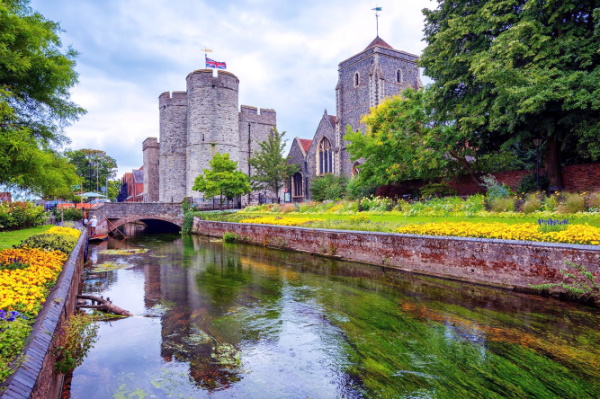
Pay a visit to historic Canterbury in Kent, and you'll soon discover why this beautiful city continues to be such a draw for visitors to the UK. An easy hour's train ride from central London (or just minutes away from the EuroTunnel), Canterbury has been a draw for pilgrims for more than 1,500 years, ever since St. Augustine first started converting pagan Anglo Saxons to Christianity here in AD 597.
The city's most famous attraction is the Canterbury Cathedral, home of the Archbishop of Canterbury. Now a UNESCO World Heritage Site, this stunning cathedral offers plenty to see, from the intricately carved masonry of its exterior to its magnificent interior, a highlight of which is the beautiful choir with its statues of six English kings. Also of note are the exquisite Miracle Windows, dating from the 12th century and depicting scenes from the life of murdered Archbishop Thomas Becket.
Afterward, be sure to spend time wandering the pedestrianized area of Old City Canterbury with its many preserved, historic timber-framed buildings, particularly along Mercery Lane.
Other Canterbury must-sees include the Canterbury Tales, a fascinating look at the life and times of famous English poet Geoffrey Chaucer, aka the "Father of English Literature." Be sure to include the excellent Canterbury Roman Museum on your itinerary. It was built around the remains of an original Roman townhouse and its unique mosaic.
10. Loch Ness and Inverness
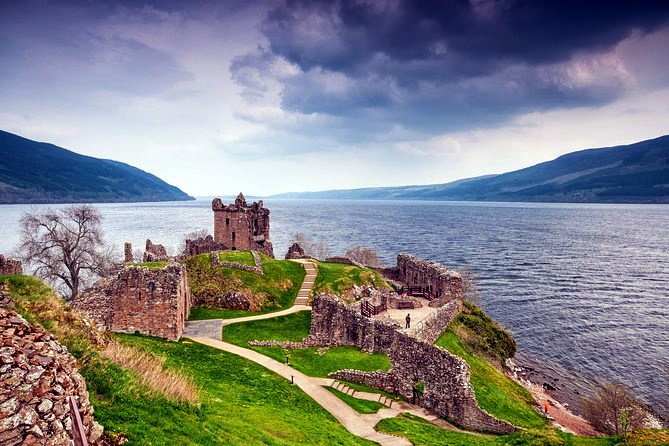
Despite the fact that the legends of mythical monsters have largely been debunked (just don't tell the locals), spectacular Loch Ness remains an extremely popular tourist attraction for travelers heading to Scotland. While it's unlikely you'll encounter any monsters, you will, however, be rewarded with seeing some of the UK's most beautiful scenery.
Highlights of Loch Ness include the ruins of Urquhart Castle. Set overlooking the loch, it's one of Scotland's largest fortifications (the current structure dates from the 14th century). For those wanting to learn more about the area's many legends, the Loch Ness Centre and Exhibition recounts its history, along with that of its monster, including details of ongoing searches for the elusive creature.
A little farther north is Inverness. This lovely city boasts numerous excellent attractions, including Inverness Castle, the Inverness Museum and Art Gallery, and the late 19th-century St. Andrew's Cathedral.
History buffs should also check out the Culloden Battlefield and Visitors Centre. It was in Culloden in 1746 that the English and Scots fought their last battle and where the fate of Scotland as a British dominion was determined. Also of interest are the gravestones of warriors from the Scottish clans, as well as the six-meter-high Memorial Cairn erected in 1881 to commemorate the battle.
11. Northern Ireland's Giant's Causeway

It's sometimes a little too easy to forget that the UK includes a tiny little piece of Ireland. Northern Ireland, consisting of the northeast corner of the "Emerald Isle," can easily be included on a trip to either country, and is well worth taking the time to explore. By far the best-known of Northern Ireland's attractions is the magnificent Giant's Causeway, a stunningly beautiful natural feature that looks anything but natural.
Just a short drive from the capital of Belfast, this UNESCO World Heritage Site is made up of unusual columns of layered basalt that jut upwards out of the sea and shoreline like some giant's staircase, hence their name. All told, there are some 4,000 of these polygonal-shaped steps to see and clamber over. Formed over 60 million years ago during a period of intense volcanic activity, it's a truly impressive sight, and easy to see how local legends of giants could so easily have sprung up as a result.
A modern visitor center has been opened here, and provides fascinating details about the reality - and the myths - behind this bucket-list attraction. Guided tours can be arranged, and audio guides are available with admission.




